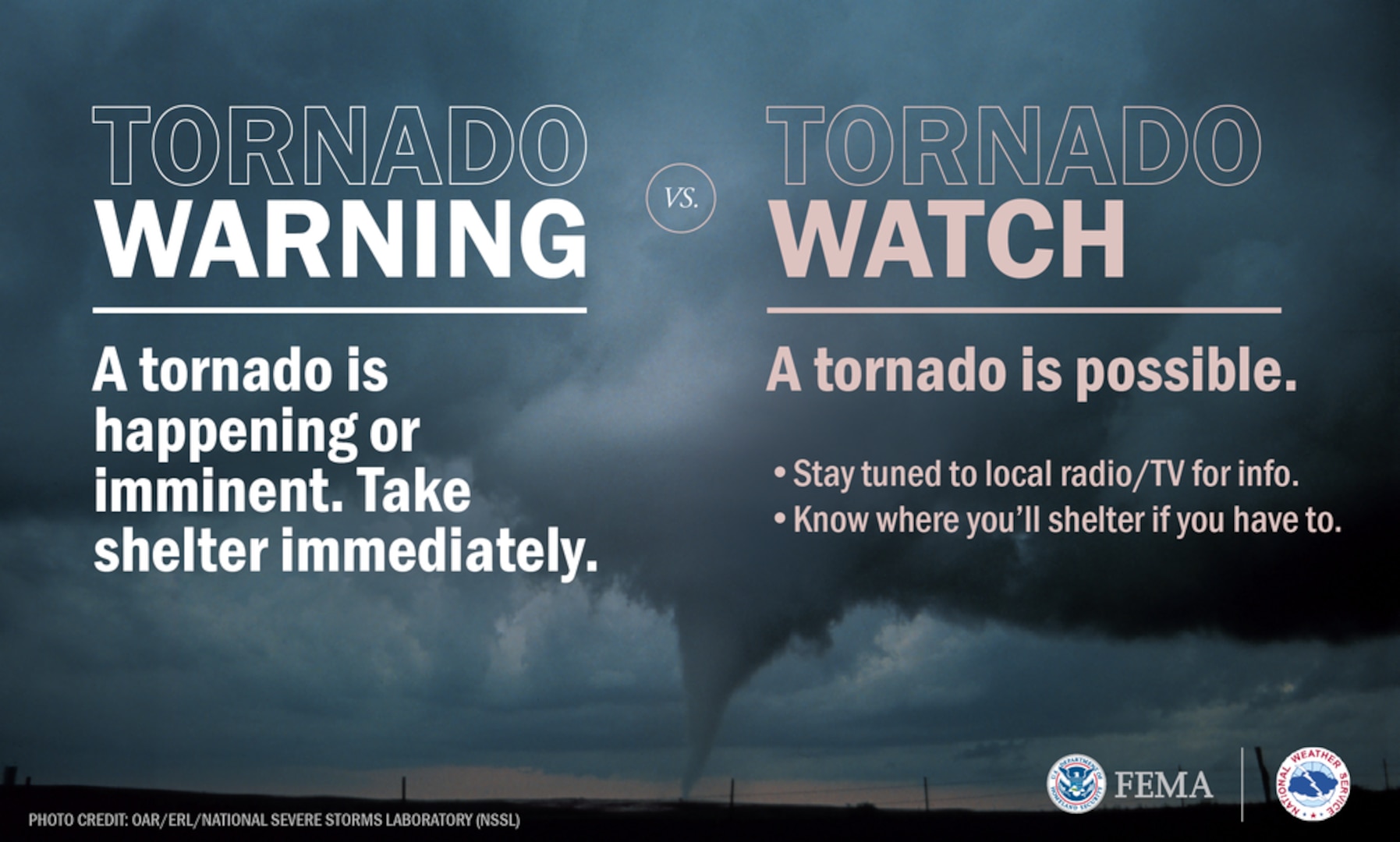Tornadoes are some of the most destructive and deadly natural disasters that can occur. When severe weather strikes, it’s essential to understand the difference between a tornado watch and a tornado warning. These terms may sound similar, but they have distinct meanings that can help you take the appropriate actions to protect yourself and your loved ones.
In a nutshell, a tornado watch is issued when weather conditions are favorable for the development of tornadoes. On the other hand, a tornado warning is a more urgent alert issued when a tornado has been sighted or detected by radar. Let’s explore these two terms in more detail to understand their significance and what actions you should take in each situation.
Tornado Watch: Be Prepared for Potential Tornadoes
When a tornado watch is issued, it means that the atmospheric conditions are conducive to the formation of tornadoes. This is an alert that is issued by the National Weather Service (NWS) and covers a large geographic area, usually spanning several counties or even states. A tornado watch is issued to give people time to be prepared and keep an eye on the weather conditions.
During a tornado watch, you should be alert and ready to take action if necessary. Here are some important things to keep in mind:
1. Stay Informed: Monitor local weather forecasts via television, radio, or reliable weather apps. Pay close attention to any updates or changes in the weather conditions.
2. Review Your Safety Plan: Take the time to review your family’s emergency plan and identify a safe location in your home where you can take shelter during a tornado. This could be a basement, storm cellar, or an interior room on the lowest level without windows.
3. Gather Emergency Supplies: Ensure that you have essential supplies, such as a flashlight, batteries, a first aid kit, non-perishable food, and drinking water, readily available in case of an emergency.
4. Secure Outdoor Items: Bring in or secure any outdoor furniture, toys, or loose objects that could become projectiles in high winds.
5. Stay Alert to Changing Weather Conditions: Keep an eye on the sky and listen for local sirens or emergency alerts. Be prepared to seek shelter if the weather rapidly deteriorates.
Tornado Warning: Take Immediate Action
A tornado warning is a more urgent alert issued by the NWS when a tornado has actually been sighted or detected by weather radar. Unlike a tornado watch, a warning is issued for a smaller area and is much more specific, covering only a few counties or parts of a county.
When a tornado warning is issued, it is vital to take immediate action to protect yourself and those around you. Here’s what you should do:
1. Seek Shelter Immediately: Time is of the essence when a tornado warning is issued. Move to a safe location in your home or workplace as quickly as possible. Remember to go to an interior room on the lowest level away from windows, such as a basement or a small, windowless bathroom or closet.
2. Take Protective Measures: If you have time, use mattresses, blankets, or heavy furniture to cover yourself and others to provide added protection from flying debris.
3. Listen to Local Authorities: Tune in to local television or radio stations for updates from emergency management officials. They will provide important information about the tornado’s expected path and any evacuation orders or road closures.
4. Stay Put: Once you have reached a safe location, stay there until the all-clear is given. Do not venture outside or try to drive through the storm.
5. Stay Connected: Keep your cell phone charged and nearby so that you can receive updates and communicate with loved ones if needed.
Frequently Asked Questions
Q: How long does a tornado watch or warning typically last?
A: The duration of a tornado watch varies depending on the weather conditions. They are usually in effect for several hours and may be extended if necessary. On the other hand, a tornado warning typically lasts for a shorter period, usually about 30 minutes to an hour.
Q: What’s the difference between a tornado and a funnel cloud?
A: A tornado is a violent rotating column of air that is in contact with both the surface of the earth and a cumulonimbus cloud. It is often visible as a destructive spinning vortex. On the other hand, a funnel cloud is a rotating condensation funnel that does not reach the ground.
Q: What should I do if I’m caught outside during a tornado?
A: If you are caught outside during a tornado, seek shelter immediately in the nearest sturdy building. If no shelter is available, lie flat in a low-lying area and cover your head with your hands.
Q: Can a tornado form without a tornado warning?
A: Yes, it is possible for a tornado to form without a tornado warning. While meteorologists use radar and other technologies to detect tornadoes, they can still form rapidly and without warning in certain conditions, making it essential to stay informed and be prepared during stormy weather.
Final Thoughts
Understanding the difference between a tornado watch and a tornado warning can make a significant difference in your ability to respond effectively to severe weather events. A tornado watch serves as a heads-up to be prepared and keep an eye on the weather, while a tornado warning requires immediate action to seek shelter.
Remember, it’s always better to err on the side of caution when it comes to tornadoes. Stay informed, have a plan in place, and be prepared to take action to protect yourself and your loved ones during severe weather. By staying vigilant and following the guidance of local authorities, you can minimize the risks associated with tornadoes and ensure the safety of those around you.
